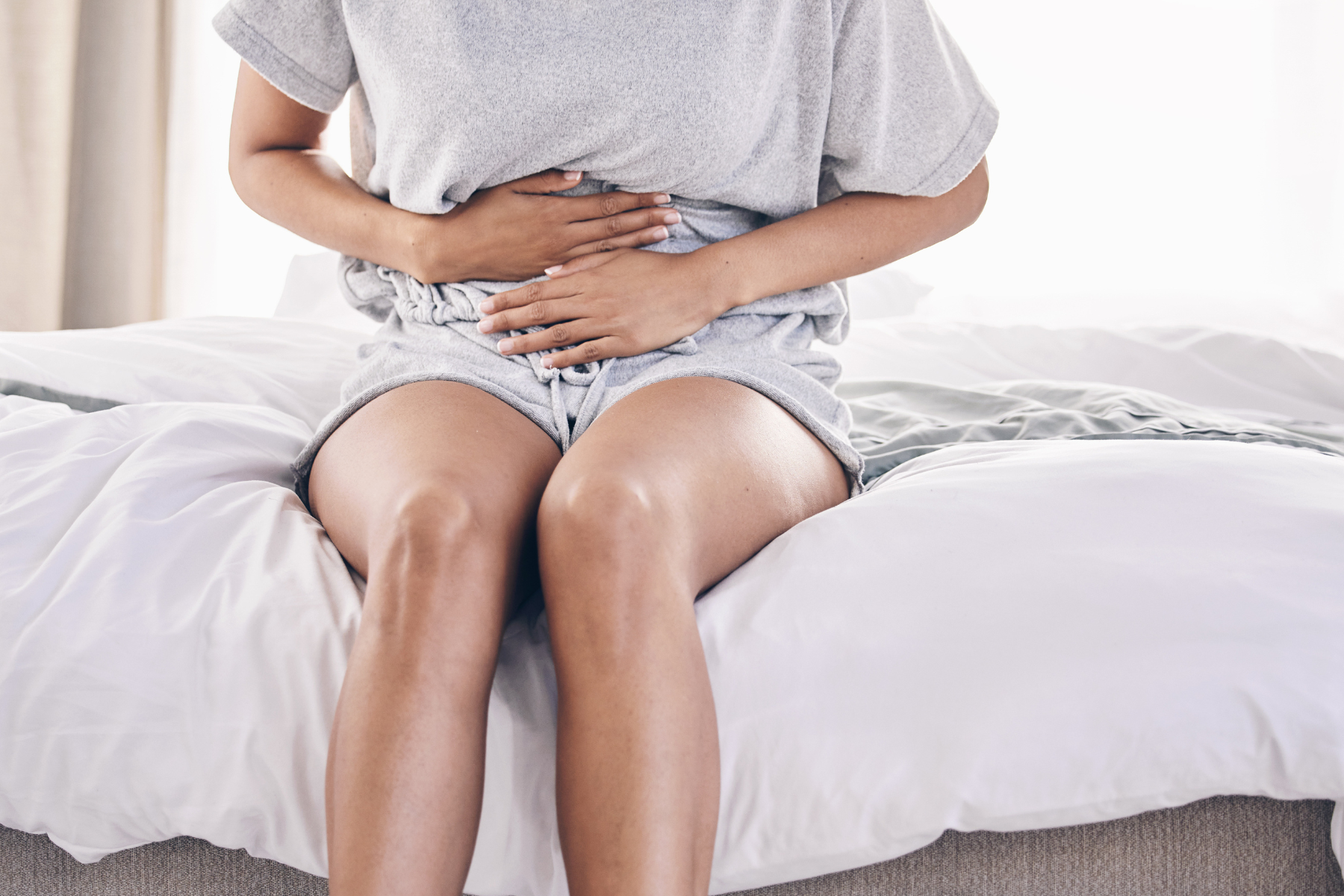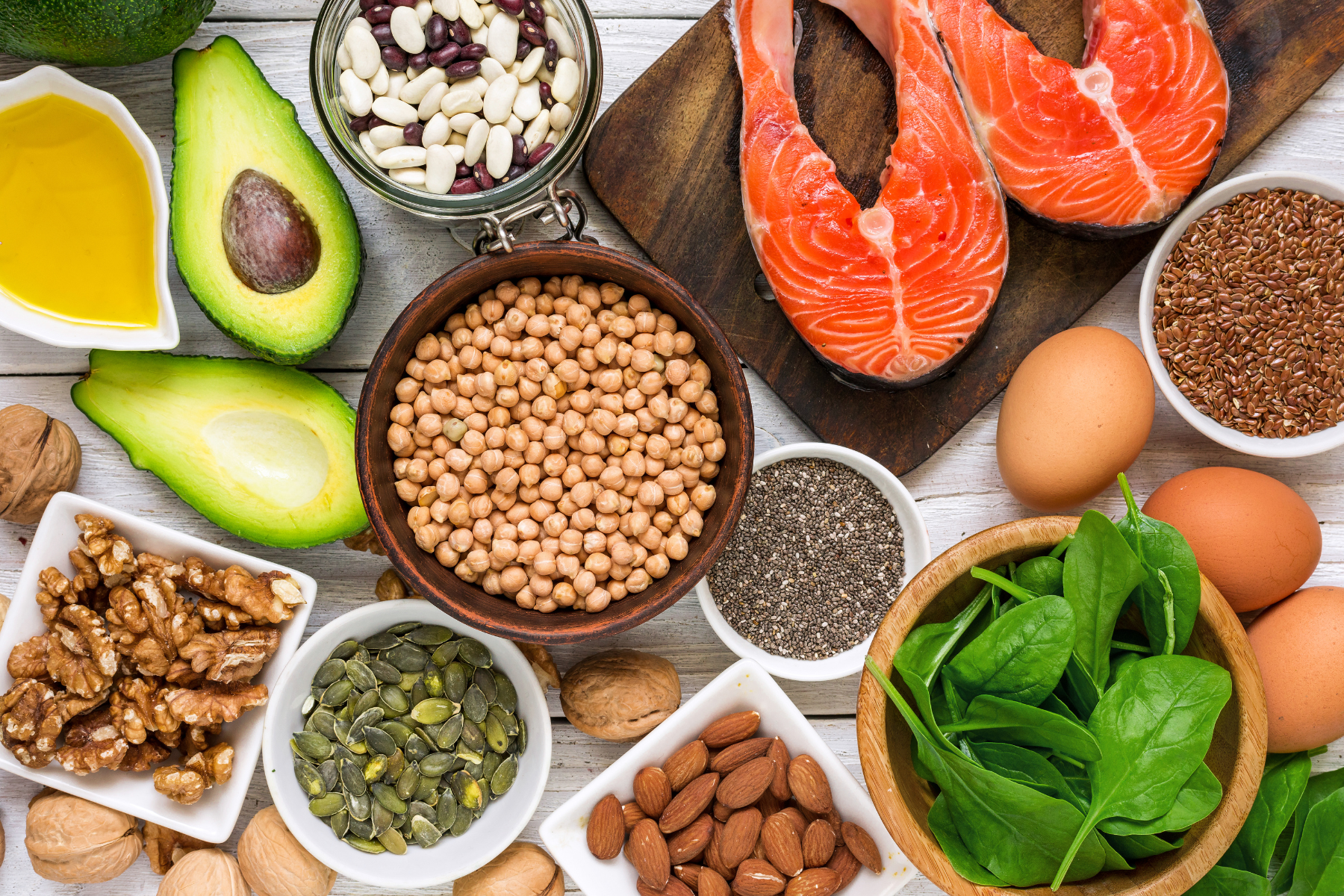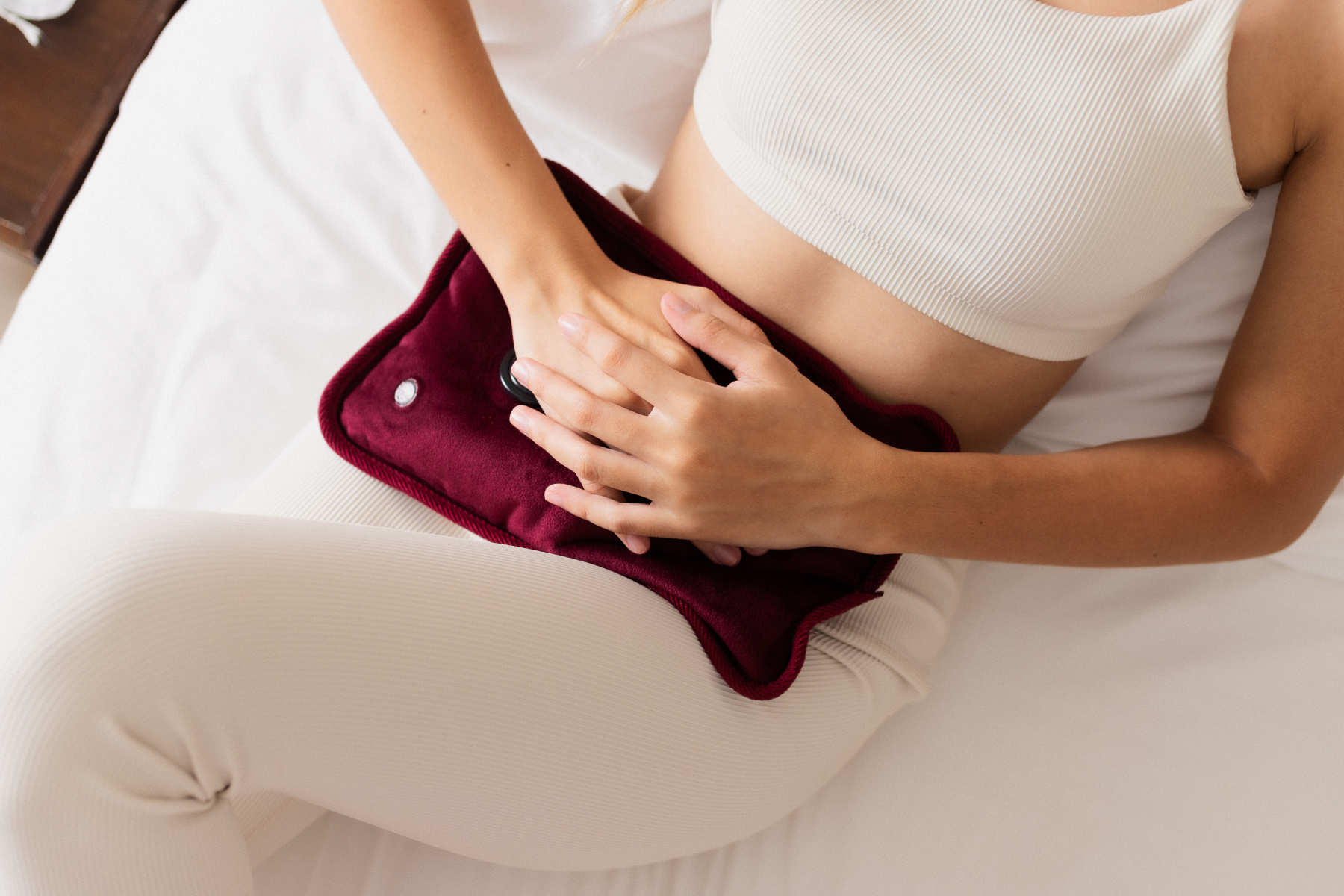
Foods That Help Reduce Perimenopause Cramps and What To Avoid
Welcome to the journey through perimenopause, a time of transition that brings its own unique set of challenges and changes. It's a phase that every woman experiences differently, marked by the ebb and flow of hormonal tides that can stir up a myriad of symptoms, from the pesky to the downright perplexing. Among these, cramps can be particularly unwelcome visitors, bringing discomfort that can touch every part of daily life. But here's some good news: what you eat can play a starring role in how you feel. This guide is all about exploring the power of dietary choices to ease perimenopause cramps and navigate this phase with a bit more ease and comfort. So, let's dive into a world where avocados, bananas, and oranges aren't just tasty treats but allies in your journey through perimenopause. Together, we'll uncover how a sprinkle of knowledge and a dash of dietary wisdom can transform this transition into a smoother experience. Welcome aboard!
What Is Perimenopause and What Are The Symptoms?
Perimenopause is the runway leading to menopause, the phase in a woman's life when the menstrual cycle takes its final bow, marking the end of her reproductive years. This transition usually kicks off in a woman's 40s or 50s, though it can start earlier, in the mid-30s. Symptoms are wide-ranging and can include everything from menstrual irregularities to hot flashes, fatigue, night sweats, mood changes, and cramps. These cramps often feel different from those in earlier years, primarily due to the hormonal fluctuations that are characteristic of perimenopause.

Is Cramping Normal In Perimenopause?
If you are stepping into the world of perimenopause, you might wonder if cramping, a familiar but unwelcome companion, decides to follow you into this new chapter. The short answer is yes, cramping is a normal part of the perimenopause journey for many. This period of transition sees your body's hormones playing a complex symphony, leading to changes that can trigger cramps alongside a spectrum of other symptoms. But fear not, for this doesn't mean discomfort without end. Understanding the nuances of your body during perimenopause opens up avenues for relief and comfort. From the foods we cherish to the lifestyle we embrace, each choice we make can influence how we experience these crampy visitors.
Why Does Cramping Happen In Perimenopause?
Hormonal Fluctuations
The main culprits behind the increase or change in cramping during perimenopause are hormonal fluctuations, particularly of estrogen and progesterone. These hormones, which have been regulating the menstrual cycle, start to play a less predictable tune as menopause approaches. Estrogen levels, for example, can spike and plummet unexpectedly. High levels of estrogen can lead to a thicker uterine lining, which, when shed, can cause more intense cramping. Additionally, these hormonal fluctuations can heighten the uterus's sensitivity to pain, making cramps feel more pronounced.
Irregular Menstrual Cycles
Perimenopause often brings irregular menstrual cycles. Periods may become longer, shorter, heavier, or lighter, and the timing between them can vary widely. These irregularities can lead to increased cramping as the body tries to adjust to the changes in the menstrual cycle. The unpredictability of the cycle can also mean that women experience cramps at times they wouldn't normally expect them, adding to the discomfort.
Uterine Conditions
For some women, perimenopause can also accentuate or exacerbate underlying uterine conditions, such as fibroids or endometriosis, which can cause cramping. These conditions may become more pronounced during perimenopause due to the hormonal changes taking place. Women with a history of these or other uterine conditions may notice an uptick in cramping as they transition through perimenopause.
Lifestyle and Stress Factors
Lifestyle and stress levels can also influence the intensity of perimenopause symptoms, including cramping. Elevated stress levels can disrupt hormonal balance, while lifestyle choices such as diet, exercise, and sleep patterns can affect the severity of cramps. Finding ways to manage stress and maintain a healthy lifestyle can help ease some of the discomfort associated with perimenopausal cramping.
Understanding the various factors behind cramping during perimenopause can empower women to seek effective management strategies, including dietary adjustments, lifestyle changes, and, when necessary, medical interventions. Knowing that these cramps are a natural part of the transition can provide some reassurance and motivate a proactive approach to symptom management.
The Impact of Diet on Perimenopause Cramps
Diet plays a pivotal role in managing perimenopause symptoms. Certain foods can exacerbate symptoms, while others may offer relief. Grasping the relationship between diet and perimenopause can be key to managing cramps more effectively. Adopting a diet rich in specific nutrients and steering clear of foods that trigger symptoms can be a proactive way to diminish discomfort. Let's dive into what foods you should be embracing and what to avoid to adjust your diet for the better.

Foods That Help Reduce Perimenopause Cramps
Opting for nutrient-rich foods can make a significant difference in alleviating cramps during perimenopause. Here are some key nutrients and foods known for their cramp-soothing properties:
Key Nutrients:
- Omega-3 Fatty Acids: Found in salmon, avocados, flaxseeds, and walnuts, omega-3s can reduce inflammation and cramp severity.
- Magnesium: This mineral, present in almonds, spinach, and dark chocolate, aids in muscle relaxation.
- Calcium: Available in dairy products like milk an cheese, calcium supports muscle function and may help reduce cramps.
- Potassium: A vital electrolyte, potassium plays a crucial role in managing fluid balance and minimizing bloating, which can intensify during perimenopause. Incorporating potassium-rich foods like bananas, avocados, and oranges into your diet can aid in maintaining fluid equilibrium, offering some relief from bloating and cramps.
Seven Foods Good for Cramps:
- Ginger: With anti-inflammatory and analgesic properties, ginger is a potent ally against cramps.
- Bananas: Rich in potassium, bananas help maintain fluid balance and relax muscle contractions.
- Leafy Greens: Spinach and kale are loaded with magnesium for muscle relaxation and iron for those with heavy periods.
- Quinoa: A source of magnesium, protein, and fiber, quinoa supports muscle relaxation and overall health.
- Turmeric: Its anti-inflammatory properties can ease pelvic pain and cramps.
- Nuts and Seeds: Chia seeds, flaxseeds and walnuts are packed with magnesium, omega-3 fatty acids, and fiber, they work together to reduce inflammation and promote muscle relaxation. Certain nuts and seeds such as almonds, hazelnuts and sunflower seeds are also high in vitamin E which is known for it's antioxidant properties and anti-inflammatory effects.
- Yogurt: The calcium in yogurt can help prevent cramps and maintain muscle tone, with Greek yogurt offering extra protein.
Foods and Substances to Avoid During Perimenopause
Just as certain foods can bring relief, others might worsen perimenopause symptoms:
- Caffeine and Alcohol: Can increase hot flashes and disrupt sleep, potentially worsening cramps.
- High-sugar Foods: May aggravate hormonal imbalances and inflammation, intensifying cramps.
- Processed Foods: Often high in salt and additives, these can exacerbate bloating and discomfort.
To assist you further in finding natural relief for menopause symptoms, we've crafted an in-depth food guide specifically designed for women going through menopause. Explore the vital nutrients that can simplify this transitional phase, and enjoy a collection of delightful recipes designed to balance hormones seamlessly. You can explore it here.
Best Herbs for Managing Perimenopause Cramps
While diet, hydration, and lifestyle changes play crucial roles in managing perimenopause symptoms, incorporating certain herbs can provide additional relief from cramping. These natural remedies have been used for centuries to ease menstrual discomfort and support overall reproductive health. Here's a look at some of the best herbs known for their effectiveness in alleviating cramps during perimenopause:
1. Ginger
Ginger is a powerful anti-inflammatory and analgesic (pain-relieving) herb, making it excellent for reducing cramping. Studies have shown that ginger can be as effective as over-the-counter pain medications in relieving menstrual pain. You can take ginger in capsule form, as a tea, or freshly grated in your food.
2. Chamomile
Chamomile is renowned for its calming and anti-inflammatory properties. Drinking chamomile tea can help soothe the nervous system and relax muscle spasms, leading to a reduction in cramping. Its gentle sedative effect also promotes better sleep, which can be beneficial for those experiencing perimenopause symptoms.
3. Peppermint
Peppermint has a natural muscle-relaxing effect and is particularly helpful in easing digestive discomforts that can accompany cramping. Peppermint tea is a popular way to enjoy these benefits, but peppermint oil capsules are also effective, especially for more severe symptoms.
4. Black Cohosh
Black cohosh is often used to manage menopause symptoms, including cramps, due to its ability to mimic estrogen in the body. This can be particularly helpful in balancing hormone levels and alleviating menstrual-like cramps experienced during perimenopause. Black cohosh is available in various forms, including capsules, teas, and tinctures.
5. Dong Quai
Known as the "female ginseng," Dong Quai is a traditional Chinese herb used to support female reproductive health. It's believed to help in balancing estrogen levels and improving blood flow, which can reduce cramping. Dong Quai is best taken in consultation with a healthcare provider, especially if you're on other medications.
6. Evening Primrose Oil
Evening primrose oil is rich in gamma-linolenic acid (GLA), a type of omega-6 fatty acid that has anti-inflammatory properties. It's believed to help with hormonal balance and reduce cramps. Evening primrose oil can be taken in capsule form.
7. Turmeric
Turmeric contains curcumin, a compound with potent anti-inflammatory and antioxidant properties. It can help reduce the production of prostaglandins, which are involved in causing cramps. Turmeric can be added to food, taken as a supplement, or enjoyed as a tea.
Precautions
While herbs can offer natural relief from perimenopause cramps, it's important to use them carefully. Always consult with a healthcare provider before starting any new supplement, especially if you have existing health conditions or are taking medications. This ensures safety and efficacy in managing your symptoms.
Incorporating these herbs into your routine can provide natural, supportive relief from cramps and other perimenopause symptoms. Whether through teas, capsules, or tinctures, these herbal remedies offer a holistic approach to managing discomfort during this transitional phase.

Additional Tips for Reducing Perimenopause Cramps
Beyond diet and hydration, incorporating lifestyle changes and home remedies can further enhance comfort during this transition. Regular exercise, heat therapy, stress management, adequate sleep, wearing loose clothing, gentle massage, considering herbal supplements (with a doctor's guidance), and staying hydrated are all effective strategies for reducing perimenopause cramps. Embracing these tips alongside dietary adjustments can provide a comprehensive approach to managing symptoms, making the perimenopausal transition smoother and more comfortable.
Wrapping Up: A Journey Towards a Balanced Diet for Smoother Sailing Through Perimenopause
The journey through perimenopause can be daunting, yet with the right dietary adjustments and lifestyle changes, navigating it can become significantly more manageable. Embracing a diet rich in anti-inflammatory foods and nutrients, while avoiding known triggers, sets the stage for a smoother transition into menopause. Remember, each woman's experience is unique, so consulting with a healthcare provider or dietitian for personalized advice is crucial. By tailoring your approach to your specific health needs and dietary preferences, you can navigate perimenopause with greater ease and comfort, making this significant transition as smooth as possible.
Unlock Exclusive Deals!
Be the first to know about our special promotions, new arrivals, and more when you sign up for our newsletter.



